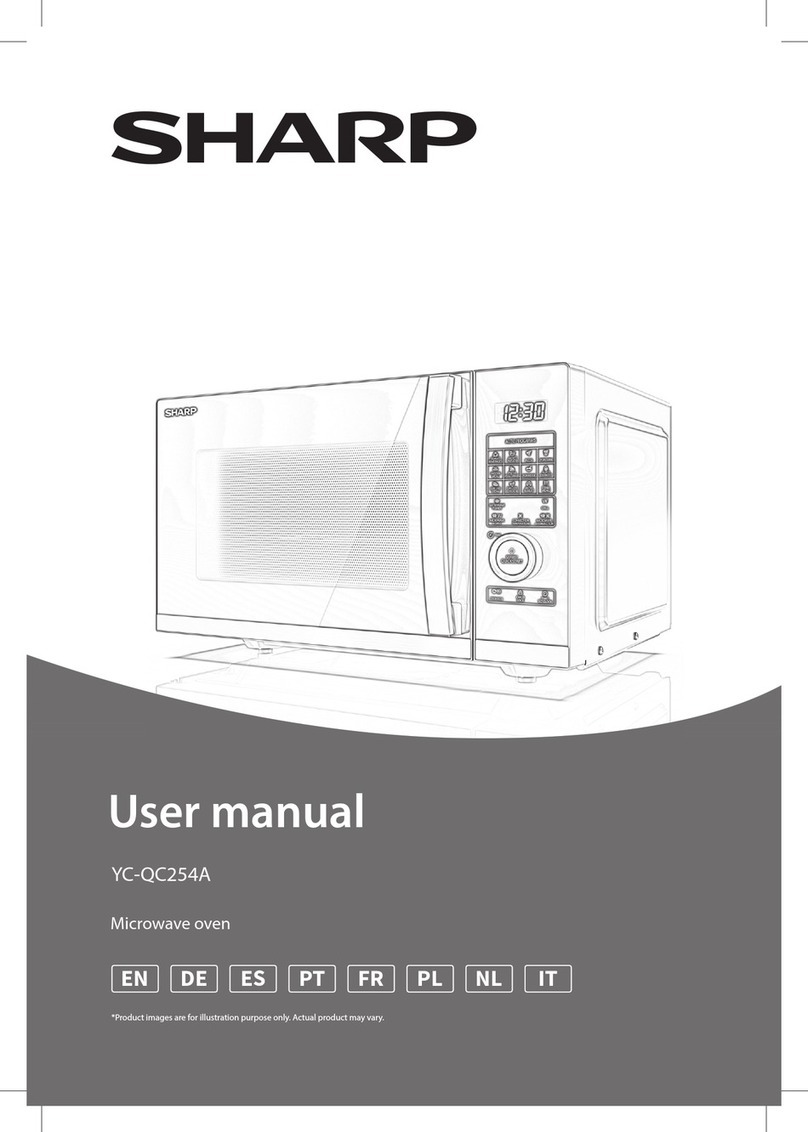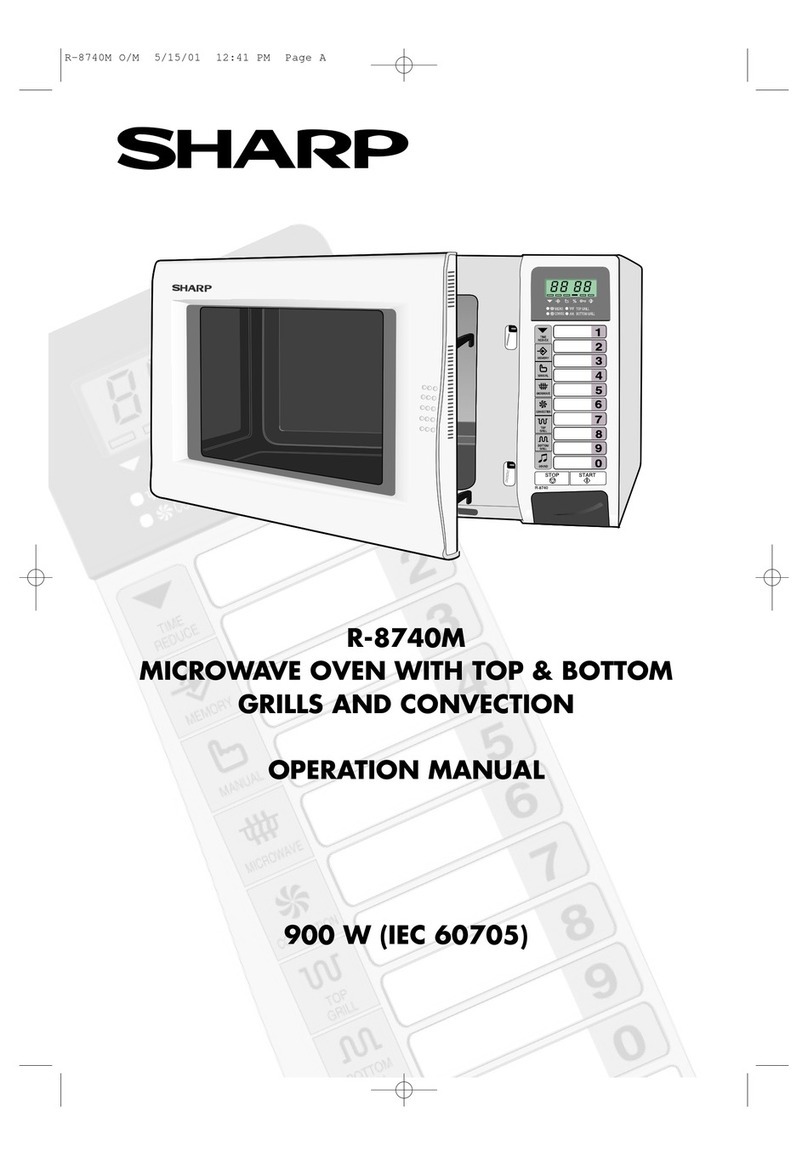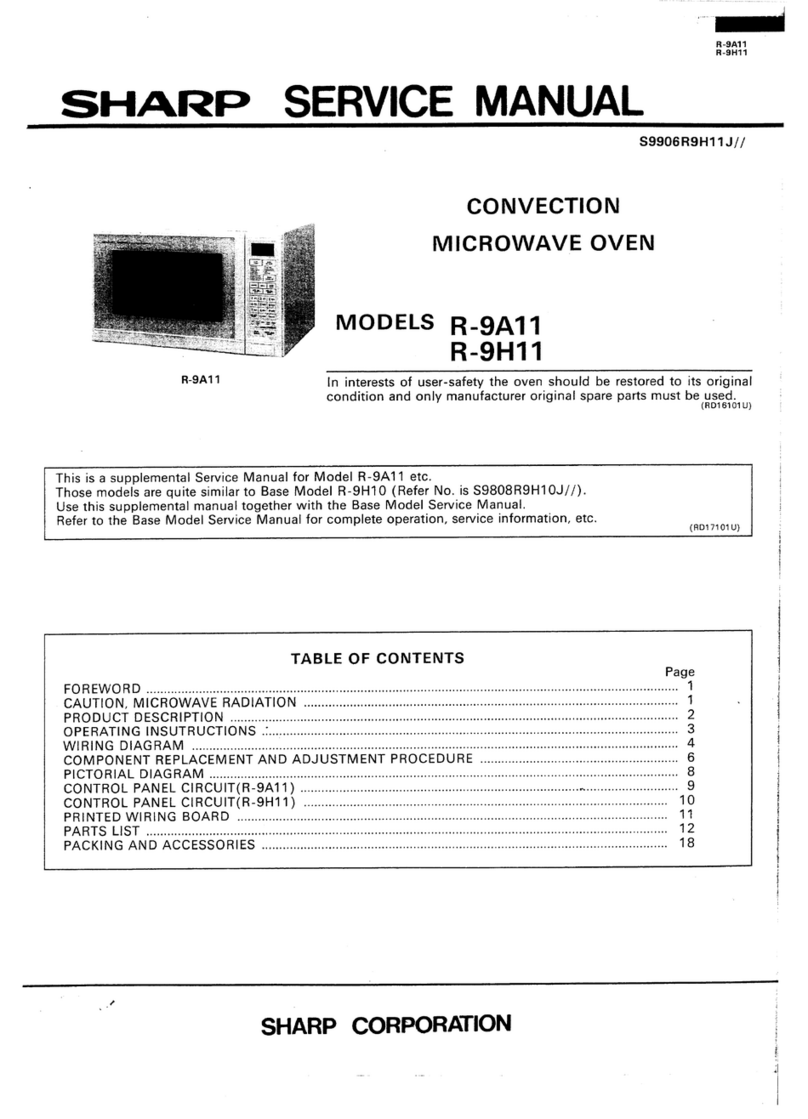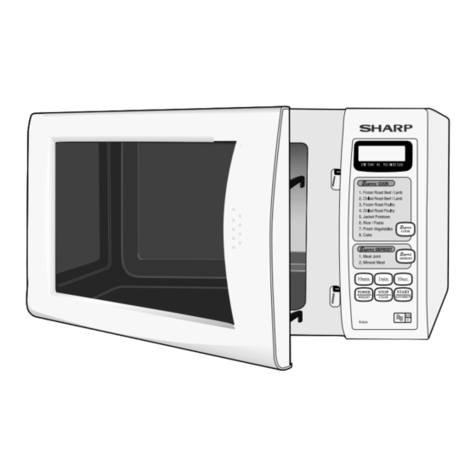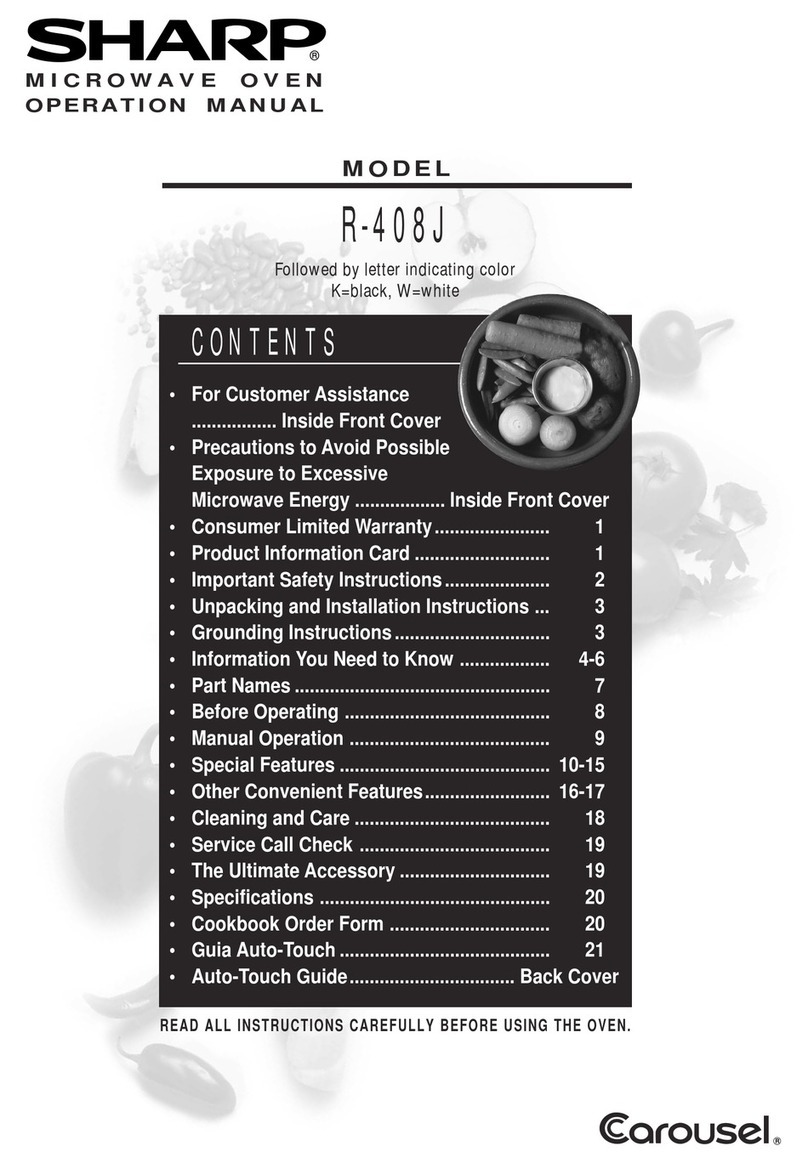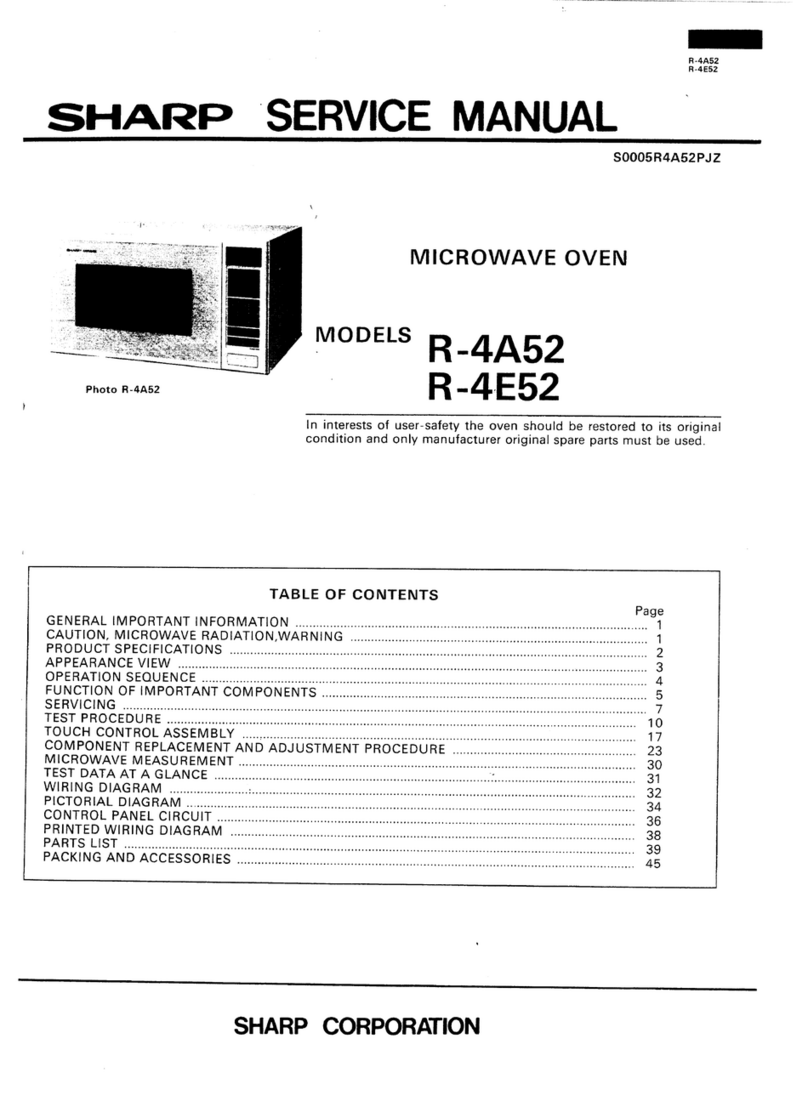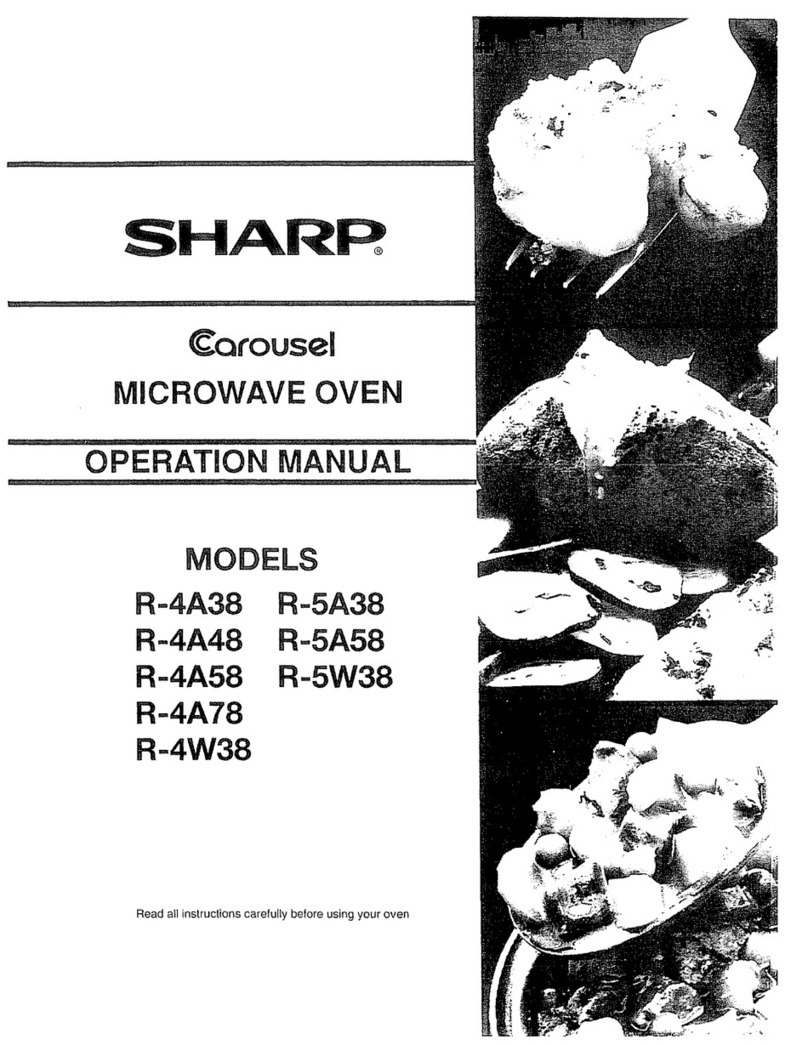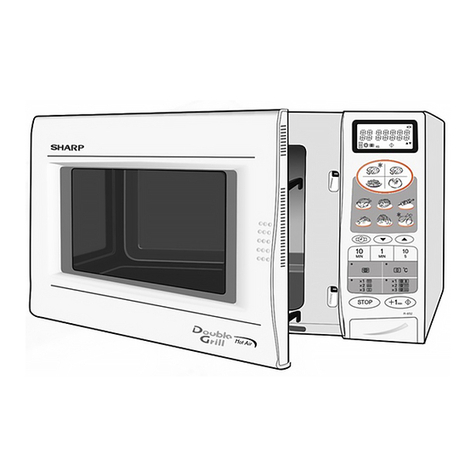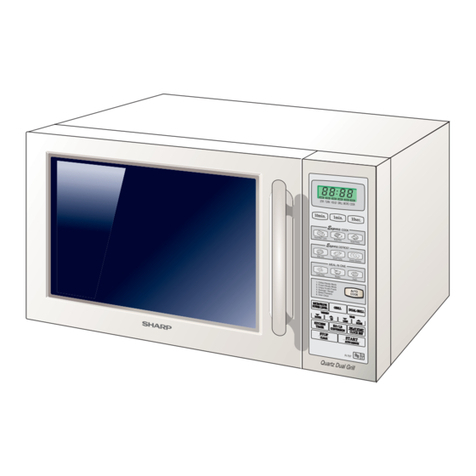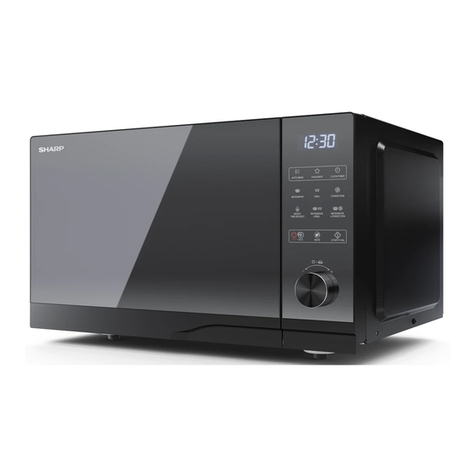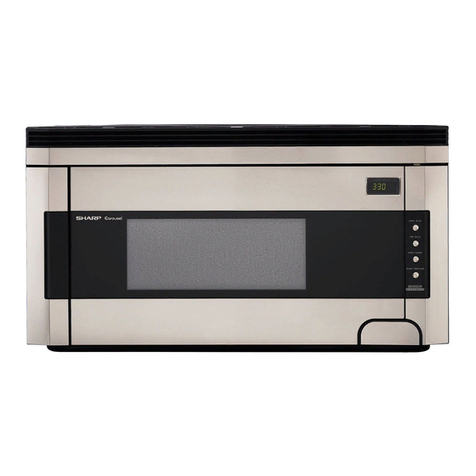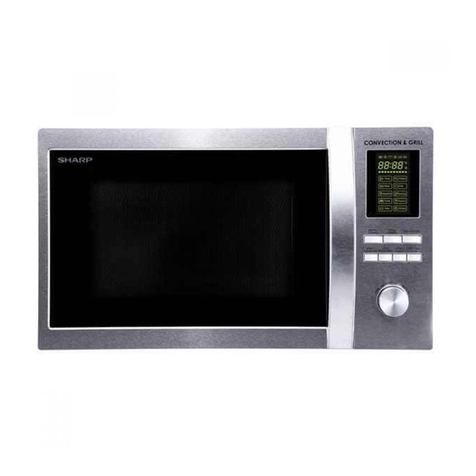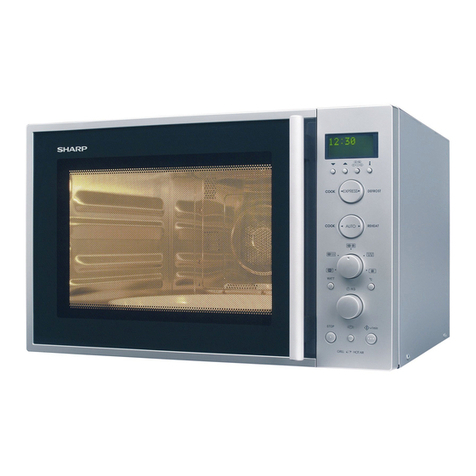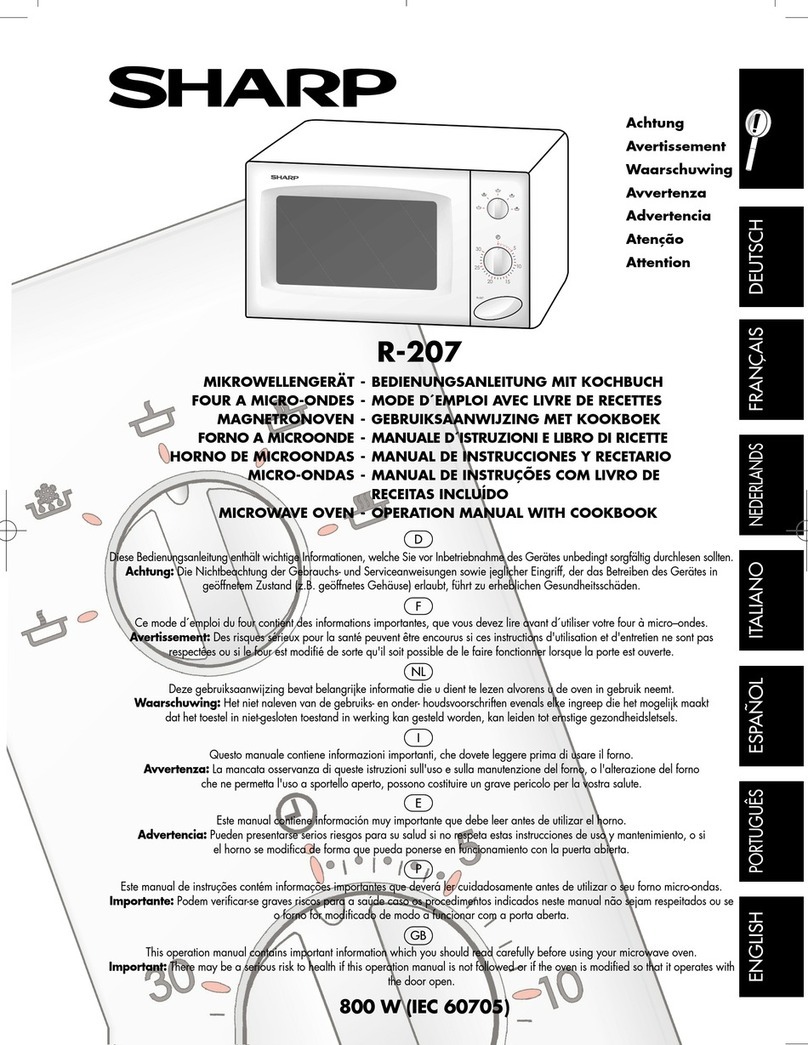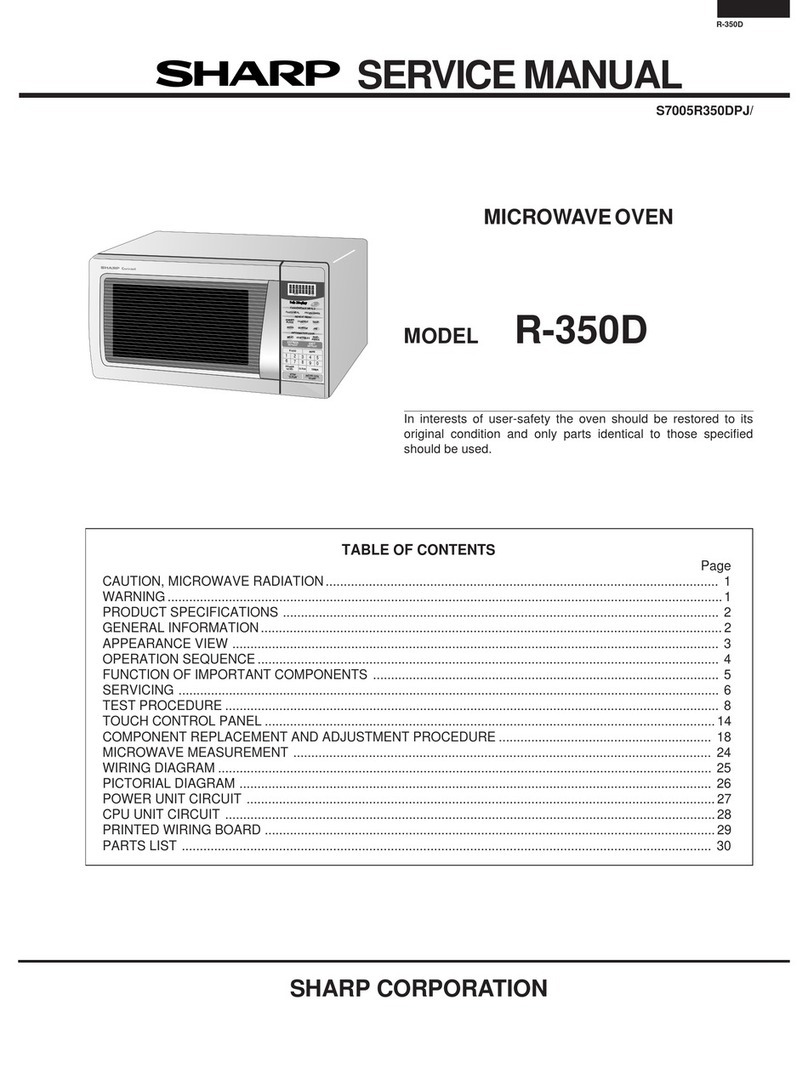
CONTENTS
CHAPTER 1. BEFORE SERVICING
[1] GENERAL IMPORTANT INFORMA-
TION ........................................................... 1-1
[2] WARNING................................................... 1-1
[3] CAUTION MICROWAVE RADIATION ........ 1-2
CHAPTER 2. WARNING TO SERVICE PERSON-
NEL
CHAPTER 3. PRODUCT SPECIFICATIONS
CHAPTER 4. APPEARANCE VIEW
[1] OVEN.......................................................... 4-1
[2] TOUCH CONTROL PANEL ........................ 4-1
CHAPTER 5. OPERATION SEQUENCE
[1] OFF CONDITION........................................ 5-1
[2] MICROWAVE COOKING CONDITION....... 5-1
[3] GRILL COOKING CONDITION .................. 5-2
[4] CONVECTION COOKING CONDITION..... 5-2
[5] DUAL COOKING CONDITION ................... 5-2
[6] ON/OFF TIME RATIO ................................. 5-3
[7] AUTOMATIC COOKING ............................. 5-3
[8] POWER OUTPUT REDUCTION ................ 5-3
[9] FAN MOTOR OPERATION......................... 5-3
[10] CONVECTION MOTOR OPERATION........ 5-3
CHAPTER 6. FUNCTION OF IMPORTANT COM-
PONENTS
[1] DOOR OPEN MECHANISM ....................... 6-1
[2] MONITORED LATCH SWITCH (SW1) ....... 6-1
[3] STOP SWITCH (SW2)................................ 6-1
[4] MONITOR SWITCH (SW3)......................... 6-1
[5] FUSE (F1) 20A 250V .................................. 6-1
[6] FUSE (F2) F8A 250V (NOISE FILTER) ...... 6-1
[7] TC TRANSFORMER .................................. 6-1
[8] THERMAL CUT-OUT (TC1) 125C (MG)..... 6-1
[9] THERMAL CUT-OUT (TC2) 170C
(GRILL) ....................................................... 6-1
[10] THERMAL CUT-OUT (TC3) 170C
(CONV.)....................................................... 6-1
[11] ASYMMETRIC RECTIFIER ........................ 6-1
[12] NOISE FILTER............................................ 6-2
[13] TURNTABLE MOTOR (TTM)...................... 6-2
[14] FAN MOTOR (FM) ...................................... 6-2
[15] CONVECTION MOTOR (CM)..................... 6-2
[16] GRILL HEATING ELEMENT (GH) .............. 6-2
[17] CONVECTION HEATING ELEMENT
(CH) ............................................................ 6-2
[18] CONVECTION COOKING SYSTEM .......... 6-2
[19] FIRE SENSING FEATURE ......................... 6-2
[20] OPEN JUDGE BY THERMISTOR .............. 6-2
[21] DAMPER OPEN-CLOSE MECHANISM..... 6-2
CHAPTER 7. TROUBLESHOOTING GUIDE
[1] FOREWORD............................................... 7-1
[2] CHART........................................................ 7-2
CHAPTER 8. TEST PROCEDURES
[1] Procedure A: MAGNETRON TEST ............ 8-1
[2] Procedure B: HIGH VOLTAGE TRANS-
FORMER TEST .......................................... 8-2
[3] Procedure C: HIGH VOLTAGE RECTIFI-
ER TEST..................................................... 8-2
[4] Procedure D: HIGH VOLTAGE CAPACI-
TOR TEST .................................................. 8-2
[5] Procedure E: SWITCH TEST...................... 8-3
[6] Procedure F: THERMISTOR TEST ............ 8-3
[7] Procedure G: THERMAL CUT-OUT
TEST........................................................... 8-3
[8] Procedure H: MOTOR WINDING TEST..... 8-3
[9] Procedure I: NOISE FILTER TEST............. 8-4
[10] Procedure J: BLOWN FUSE (F1) 20A........ 8-4
[11] Procedure K: BLOWN FUSE (F2) 8A
(NOISE FILTER) ......................................... 8-4
[12] Procedure L: GRILL HEATING ELE-
MENTS (TOP) AND CONVECTION
HEATING ELEMENT TEST ........................ 8-4
[13] Procedure M: CONTROL PANEL AS-
SEMBLY TEST ........................................... 8-4
[14] Procedure N: JOG AND SWITCH UNIT
TEST........................................................... 8-5
[15] Procedure O: RELAY TEST ........................ 8-6
[16] Procedure P: PROCEDURES TO BE
TAKEN WHEN THE FOIL PATTERN ON
THE PRINTED WIRING BOARD (PWB)
IS OPEN ..................................................... 8-6
CHAPTER 9. TOUCH CONTROL PANEL ASSEM-
BLY
[1] OUTLINE OF TOUCH CONTROL PAN-
EL ............................................................... 9-1
[2] SERVICING FOR TOUCH CONTROL
PANEL ........................................................ 9-1
CHAPTER 10. PRECAUTIONS FOR USING LEAD-
FREE SOLDER
CHAPTER 11. COMPONENT REPLACEMENT
AND ADJUSTMENT PROCEDURE
[1] BEFORE OPERATING ..............................11-1
[2] OUTER CASE REMOVAL .........................11-1
[3] HIGH VOLTAGE COMPONENTS RE-
MOVAL.......................................................11-1
[4] HIGH VOLTAGE TRANSFORMER RE-
MOVAL.......................................................11-2
[5] MAGNETRON REMOVAL .........................11-2
[6] CONTROL PANEL ASSEMBLY RE-
MOVAL.......................................................11-2
[7] FAN MOTOR REREPLACEMENT.............11-2
[8] TURNTABLE MOTOR REPLACEMENT....11-3
[9] CONVECTION MOTOR AND CONVEC-
TION HEATING ELEMENT REMOVAL .....11-3
[10] POSITIVE LOCK........................................11-4
[11] OVEN LAMP SOCKET REMOVAL............11-4
